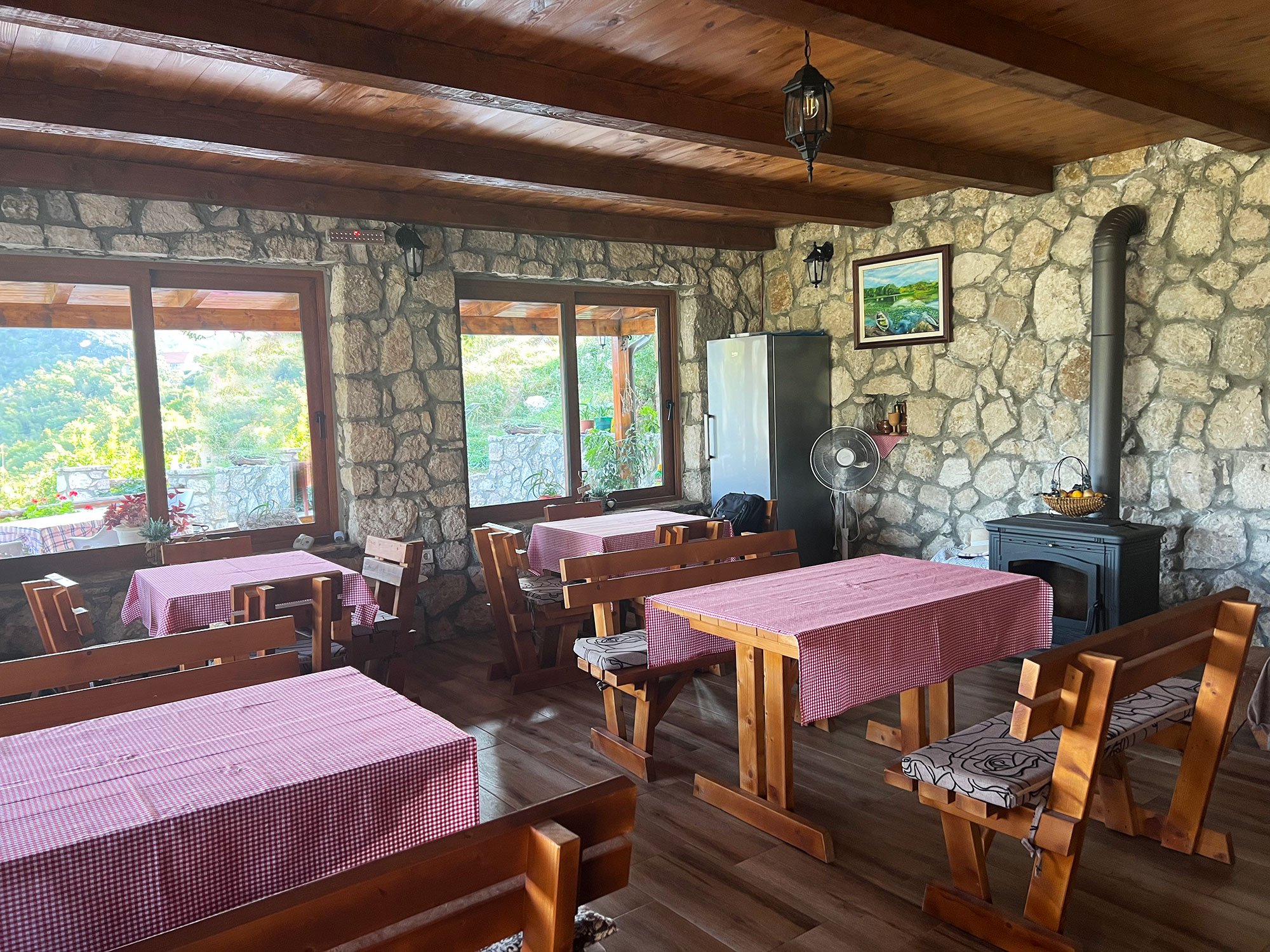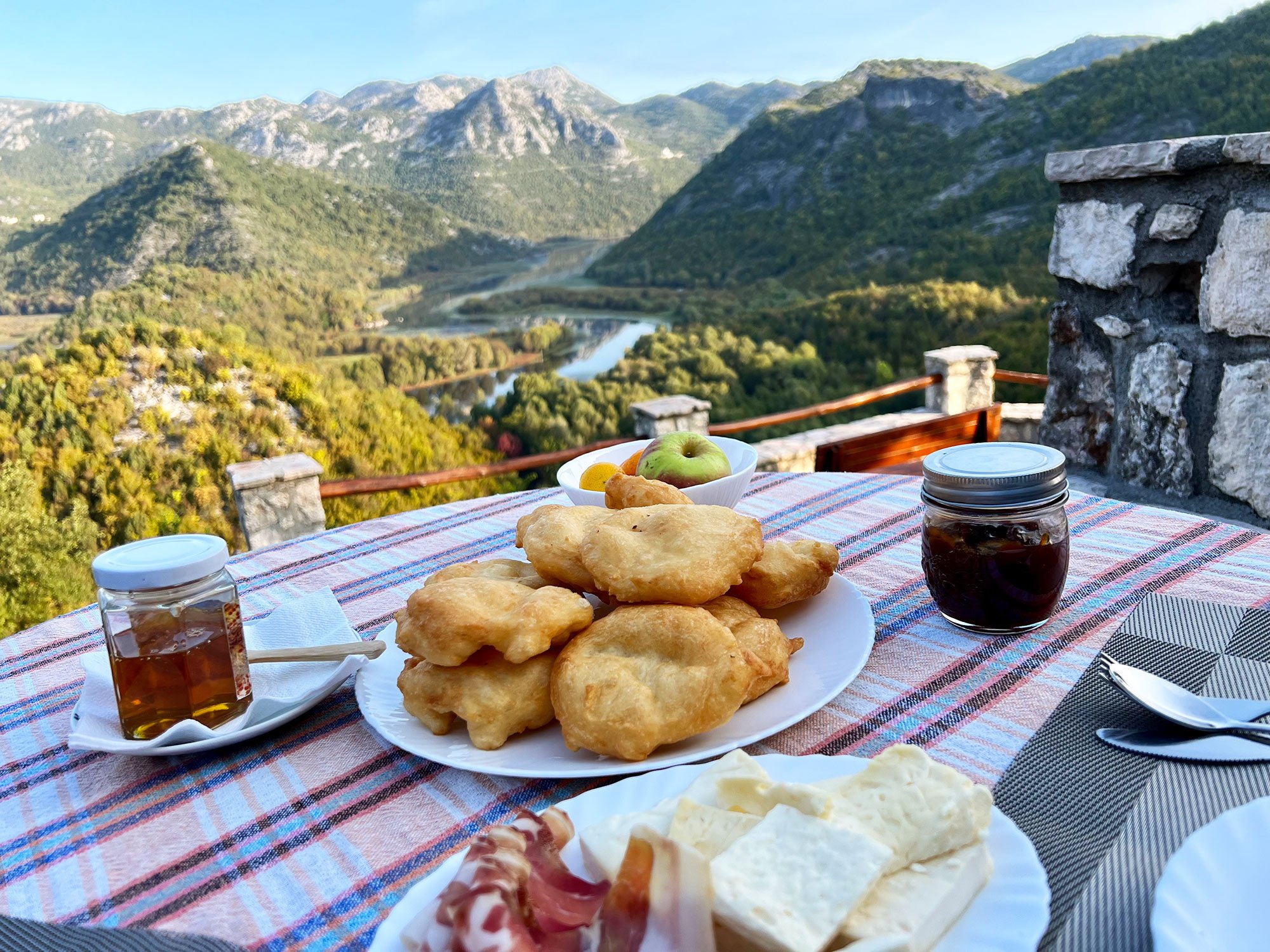A first visit to Montenegro including Kotor and Lake Skadar
The Bay of Kotor
Montenegrins call their country Crna Gora – Black Mountain, which refers to Mount Lovćen, towering above the Bay of Kotor at 1,749m. Montenegro is the Venetian - Italian name.
Firstly, a brief introduction to Montenegro
Montenegro is a tiny country nestled between Croatia, Albania, Serbia, Kosovo, Bosnia & Herzegovina, and therefore a vital connection (or barrier?) between West and East.
Montenegro, along with Serbia, was the last remaining part of Yugoslavia, and Montenegro left Serbia peacefully in 2006 to return to independence.
Montenegro’s population is only 619,000 and consists of a not always harmonious blend of different cultures and religions: Montenegrins only form around 45%, with sizeable minorities identifying as Serbs (29%) 12% Bosniaks/Muslim and 5% Albanians (2011 Census)
We spent just a week in Montenegro and should stress that we saw only a limited area: Rijeka Crnojevića, Kotor Bay, Skadar Lake and Podgorica, the capital city.
Montenegro, overall, is keen to join the EU (and indeed has already adopted the Euro as its currency) but also has historically strong ties with the East (for example, it uses the Cyrillic alphabet). At the time of writing, in October 2023, Montenegro’s EU accession plans have stalled after the EU called upon Montenegro’s newly-elected parliamentary parties to form a stable government, end corruption and implement genuine reform.
Scenically, Montenegro is stunning: jagged limestone mountains soaring out of the deep blue Adriatic, rugged inland mountain ranges offering true wilderness and isolation, deep gorges and canyons.
Is Montenegro good for a holiday?
Your experience in Montenegro will very much depend on what you want from your holiday or travels. Personally, we love active travel among wild, natural beauty; a sense of a unique, welcoming culture; the freedom to travel sustainably and independently; and as few other tourists as possible!
Montenegro delivered on some of those needs, but not all.
Our brief experience of a week’s travel across three locations suggested to us a country of extremes: from highly-developed beach resorts; to rural areas with no tourist infrastructure whatsoever; to Podgorica – probably the least attractive capital city we’ve ever been to.
Scenically, Montenegro is stunning: jagged limestone mountains soaring out of the deep blue Adriatic, rugged inland mountain ranges offering true wilderness and isolation, deep gorges and canyons, and fabulous, rocky trails through the mountainous karst landscape near the coast – perhaps reminiscent of parts of Greece 50-100 years ago.
Rijeka Crnojevića
We arrived at our first accommodation, Rooms Novak Rijecani, after driving from the airport along a very narrow country lane through an intensely dark landscape, where we could only imagine what lay on either side (and above and below as it turned out). We enjoyed a very welcome home-cooked dinner of fantastically fresh trout (for me, chicken for Graham), a bottle of delicious wine (made by Novak himself) and an early night.
I was so excited to open the curtains that first morning – I’d seen before booking that Rooms Novak Rijecani enjoy great views. But nothing could’ve prepared us for the incredible beauty and magnitude of those views – so see for yourself!
Phenomenal. The best views of anywhere we’ve stayed. Everything about Rooms Novak Rijecani was great – we really loved it. Nestled in a tiny hamlet of only a few houses, everything was home cooked to order using fresh fruit and vegetables out of the garden. Breakfast was awesome: traditional Priganice, (sort of a cross between sugarless donuts and fritters), served with honey from the bee hives in the garden; homemade plum jam; creamy, salty handmade cheese from the north of Montenegro; and the most amazing prsut (prosciutto) I’ve ever tasted – its richly intense tangy, smoky, saltiness was a true delight.
Rooms Novak Rijecani is fully deserving of its 5* rating on AirBnB and our room cost only 45 euros a night (plus breakfast @ 7euros and dinner @ 15 euros.
Bay of Kotor
We’d seen many photos of the Bay of Kotor but felt we had to see it for ourselves, despite warnings that it is touristy and, from those who know us well, not really ‘our thing’. But many people love it and the photos of a magnificent fjord-type setting, with towering mountains rising straight from the sea, were irresistible.
Sadly, we discovered they are irresistible to everyone else too, and despite visiting in late October, right at the end of the holiday season, Kotor really did not deliver on our need to see as few other tourists as possible. It was so busy – I can’t even imagine what it’s like in peak season. The main reason for this, as far as we could tell, is that it’s an exceptionally popular port for cruise ships, which decant thousands of passengers to ‘explore’ the bay for a few hours. This ‘exploration’ often seems to consist of trudging in a large group behind a tour guide brandishing a numbered placard, with all the individuality of lemmings. I know that’s harsh and they were probably having a wonderful time, but it’s really not for us and directly opposes our need for sustainable and individual travel. Further investigation revealed that the cruise ships are causing untold environmental damage in Kotor Bay and there are calls to reduce their number and size in the same way as Venice and Barcelona.
Without the cruise ships, the old town of Kotor would be nice – still touristy, but nice. The setting is sublime and the walk up to St John’s Fortress provides stunning views throughout. Be warned though that there are 35+ minutes of steep steps in each direction, and it’s pretty busy. Take enough water and maybe don't attempt it after rain as it would be very slippery coming back down.
We stayed for a couple of nights 20 minutes further up the coast in Perast – much smaller than Kotor but still very much on the tour group trail given its beauty and prime position overlooking The Church of Our Lady of the Rocks. Our accommodation was fantastic – Guesthouse Zmukic right on the harbourfront, with a balcony overlooking the bay. It is only 40 euros a night and highly recommended. The village of Perast is also lovely – just a few restaurants, shops and historic buildings.
Virpazar and Skadar Lake
Our third stay was primarily chosen to be within reasonably easy reach of Podgorica (our trip to Montenegro being mainly to check on and help socialise three abandoned puppies Lizzie had rescued in the summer. A long story!) We stayed just outside Virpazar at Prevalis Nature Cottage, owned by the same guy as Country House Djurisic.
Our host, Marko, was a great guy and a true tourism professional. He has his own vineyard and makes delicious red wine and also rakija – the national drink (a ferocious brandy). If Marko invites you into his cellar, seize the opportunity! He studied political sciences and can provide a wealth of fascinating insights into Montenegro, its history and culture.
Virpazar, a small village, is the main place to organise a boat tour or kayaking trip on Lake Skadar, with the river harbour full of small, brightly coloured craft. Be warned that you will be accosted by quite heavy-duty salesmen on your arrival – politely turn them down and make your own decision!
So, in conclusion…
Would we return to Montenegro?
Yes, because we’d like to explore the high mountains and national parks: Durmitor and Prokletije have particular appeal. The few walks we did during our trip were second to none and we’d like to explore further (me more so than Graham).
Is Montenegro good for a holiday?
It depends on what you want from your holiday. Those who enjoy package holidays, cruises and/or developed beach resorts would probably love it, as would adventurous souls who love the wilderness and places that really don’t pander to tourists at all. Montenegro does offer immense natural beauty for very affordable prices, and when you get off the beaten track, provides a wonderfully ‘gritty’ experience.
PS Stray dogs and cats are everywhere and, combined with notoriously reckless Montenegrin driving, form very distressing roadkill 💔 Please donate to a rescue shelter if you can, or even consider adopting or fostering a stray Montenegrin cat or dog. The poor little things really do need our help.
*Stray Aid Montenegro is one of the main rescue and adoption agencies (no affiliation or connection to us)



















